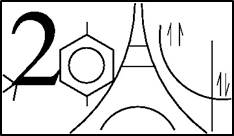The direct allylation reaction's mechanism of active methylene compounds with cyclic Baylis-Hillman (BH) alcohol catalyzed by 4-dimethyaminopyridine(DMAP) has been investigated by means of Density Functional Theory(DFT) with B3LYP/6-311++G(d,p) (See scheme) . The first steps are considered as acid-base reactions followed by allylation of active methylene compound with cyclic BH alcohol. Calculated gas phase pka values illustrate that active methylene compounds have the higher acidity than the considered cyclic BH alcohol. The DMAP catalytic activity may be interpreted as a proton transfer bridge from active methylene compounds to cyclic BH alcohol. Two alternative competing reactivity sites are present reflecting that the most importing reactivity index is the orbital control. Regio selectivity has been carried out on the base of natural atomic charge, Fukui, Parr and Pearson descriptors. The geometry of transition structure have been optimized and identified by intrinsic reaction coordinate path
- Poster

 PDF version
PDF version

